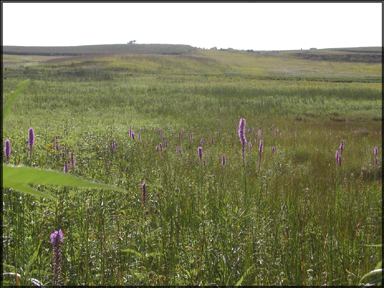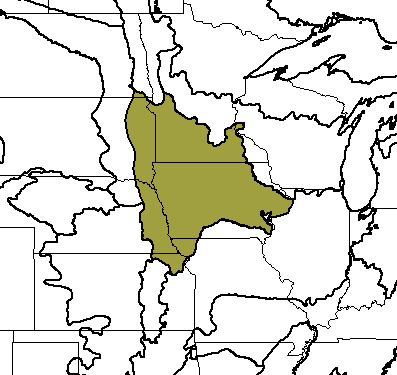
blazing star, northwest Iowa (c) 2005 Ron E. VanNimwegen
Bioimages home (click on an image to enlarge)
view
this page in its intended navigation context
Central tall grasslands (WWF
ecoregion NA0805)

blazing star, northwest Iowa
(c) 2005 Ron E.
VanNimwegen

Source of bioregions data:
Olson, D. M. and
E. Dinerstein. The Global 200: Priority ecoregions for global conservation. (PDF
file) Annals of the Missouri Botanical Garden 89:125-126.
Distinctiveness (1=highest,4=lowest): 1
(globally outstanding)
This prairie ecoregion had a rich herbaceous plant cover including as many as
250 species.*
Conservation Status (1=most endangered, 5=most
intact): 1 (critical)
There are no sizeable blocks of intact habitat remaining. Nearly all of
the ecoregion has been converted to tilled cropland. Most of the intact
patches are smaller than 0.08 km2.*

Some views from the ecoregion
Neal Smith National Wildlife Refuge, Iowa


left: Fire is an important natural component of this ecoregion. right: In the
absence of fire, trees invade the grassland as seen in this overgrown savanna.
(c) 2005 Ron E.
VanNimwegen
hires
hires
wetlands, northern Iowa


Naturally occurring wetlands in the prairie ecoregions provide vital habitat for
waterfowl. left: Fens are wetlands that are fed by the seepage of
groundwater. right: Potholes are remnant glacial features.
(c) 2005 Ron E.
VanNimwegen
hires
hires
South Dakota


left: cropland and pasture in background, right: roadside (c) 2005
Carol J. Baskauf
hires
hires


Ecinacea angustifolia and other prairie plants along roadside, South
Dakota (c) 2005
Carol J. Baskauf
hires
hires
* Ricketts, T.H., E. Dinerstein, D.M. Olson, C.J. Loucks, et al. (1999) Terrestrial Ecoregions of North America: A Conservation Assessment. World Wildlife Fund - United States and Canada. Island Press, Washington, D.C. pp. 337-340.
Except as noted, images copyright 2002-2004 Steve Baskauf - Terms of use